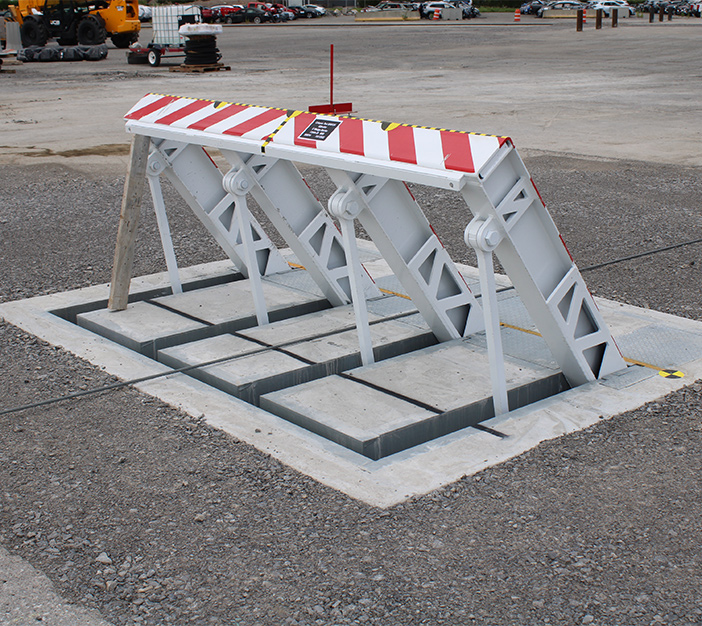The Single Strategy To Use For Wedge Barriers
The Main Principles Of Wedge Barriers
Table of ContentsWedge Barriers - QuestionsSome Known Questions About Wedge Barriers.


18 might be done faster, conveniently, and price successfully. FIG. In particular personifications, the support 30 might be a steel structure including plates, light beams(e. g., I-beams ), and/or various other structures that are secured within the structure 14, which might be concrete. At the surface 12, a top side 28 of the support 30 might go to the very least partly revealed
, thereby allowing the accessory of the obstacle 10 to the support 30. g., threaded holes)in one or more beams or plates of the anchor 30 might be revealed to the surface 12. In this way, screws 32 or various other mechanical bolts may be used to secure the barrier 10 to the support 30. As the barrier 10 is placed to the surface 12 of the foundation 14, collection of debris and other material beneath the barrier may be reduced, and elements of the bather 10 look at this website might not be revealed to below grade environments. As suggested by recommendation numeral 52, the training mechanism 50 consists of components disposed underneath the wedge plate 16. As an example, the components 52 underneath the wedge plate 16 may include an electromechanical actuator, a webcam, one or more camera surface areas, and so forth. Additionally, the training device 50 consists of a springtime assembly 54
The spring pole 58 is combined to a webcam(e. g., webcam 80 shown in FIG. 4) of the training mechanism 50. The springs 60 disposed about the spring rod 58 are held in compression by spring supports 62, consisting of a repaired springtime assistance 64. That is, the set springtime support 64 is dealt with family member to the foundation 14 and the remainder of the bather 10.
Little Known Facts About Wedge Barriers.
g., spring assistance 65 )might be repaired to look at this now the end of the springtime rod 58 to make it possible for compression of the springs 60. As the springs 60 are compressed in between the spring supports 62, the spring setting up 54 generates a pressure acting on the webcam coupled to the spring rod 58 in a direction 66. The continuing to be pressure applied to
the cam to deploy release wedge plate 16 may might provided offered an electromechanical actuator 84 next or other actuator. The spring setting up 54 and the actuator 84(e. g., electromechanical actuator)might run with each other to convert the web cam and raise the wedge plate 16.
As stated over, in the released setting, the wedge plate 16 serves to obstruct gain access to or traveling past the obstacle 10. The barrier 10(e. g., the wedge plate 16 )might obstruct pedestrians or automobiles from accessing a property or path. If a lorry is taking a trip in the direction of the released wedge plate 16(e. For example, in one situation, the security legs 86 might be prolonged throughoutmaintenance of the barrier 10.